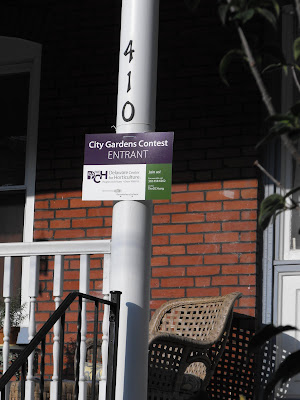 41: the international dialing code for Switzerland
41: the international dialing code for Switzerland41: George W. Bush's nickname for his father, George H.W., the 41st President of the United States
41: Montana, as in the 41st U.S. state
41: the year Caligula was assassinated
41 (B.C.E.): the beginning of the Marc Antony - Cleopatra alliance (and their fabled love affair!)
41: cuarenta y uno, Mexican slang for "homosexuals" stemming from a scandal dubbed El baile de los cuarenta y uno (the Dance of the 41), in reference to a 1901 raid on a private house which resulted in the arrest of 41 high society gays, and the ensuing efforts of the Porfirio Diaz government to cover-up the affair
41: the Jupiter Symphony, Mozart's last (only because he skipped the number 37)
 41: the number of distinct genera of plants in my rear shade garden (to be clear, I count 80 species of 41 different genera in the rear shade garden)
41: the number of distinct genera of plants in my rear shade garden (to be clear, I count 80 species of 41 different genera in the rear shade garden) 41: a measure of time, not always an arbitrary number; both a singularity and a component in an infinite sequence
Time passes: neither can we deny or stop it. "Time," Heidegger mused, "is the truth of space." Space, therefore, is ontologically prior to time, and to understand time, we must understand space.
Yet, on my reading of his formulation, the only way we may understand space is through time. The two are inextricably linked. This is not to suggest a conception of space as linearity, but in a sense it is. While Life (with a capital L, a designation of the phenomenon) may be adequately denoted as a cycle (of birth, maturation, decline, and death), life as an individual phenomenon itself manifests the cycle but it cannot be renewed. Individual life is finite, and therefore linear.

Take any number: it is, in its singularity, both a beginning and an end. Set sequentially, though, it becomes a fleeting moment, a link to that which precedes and that which proceeds it. Both understandings ultimately get at why age is so significant: we are simultaneously linked and de-linked to a world beyond. Our individuality is inherently determined by our own acts of self-creation (and, to be a bit Hegelian, self-negation), but also by our sheer connectedness to a broader universe. We are Time and we are time, we are Life, and we are life.
The garden exemplifies this movement of the truth of space. Our plants become our selves, and our selves become enmeshed in a horticultural assemblage, a kingdom beyond our control but always connected to us.
 That is why I take so many photographs of the garden. Every morning, every afternoon, every moment of time: each offers something new, whether in the opening of a blossom, the fading of a color, the growth of a stem, the appearance of a leaf. We may deem these insignificant moments, or moments to be fully appreciated on the weekend. But these almost inappreciable moments obtain significance, for, taken together, they become the pedagogy of the garden: it teaches us to be in the world, it envelops us in space. And always it makes us appreciate the passage of time, even as time for a brief moment, stands still.
That is why I take so many photographs of the garden. Every morning, every afternoon, every moment of time: each offers something new, whether in the opening of a blossom, the fading of a color, the growth of a stem, the appearance of a leaf. We may deem these insignificant moments, or moments to be fully appreciated on the weekend. But these almost inappreciable moments obtain significance, for, taken together, they become the pedagogy of the garden: it teaches us to be in the world, it envelops us in space. And always it makes us appreciate the passage of time, even as time for a brief moment, stands still.The garden: it is my filibuster, it is my Switzerland, it is now, for this moment anyway, my 41.




























